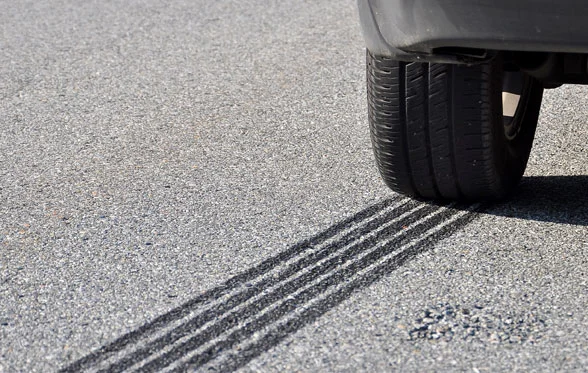On January 14, 2013, NHTSA published a Draft Environmental Assessment (Vol. 78, Number 9; FR Docket Number 2013-00361; NHTSA-2011-0100) to evaluate the potential environmental impacts of a proposed rule establishing a Federal Motor Vehicle Safety Standard setting minimum sound requirements for hybrid and electric vehicles and an NPRM (Vol. 78, Number 9: FR Docket Number 2013-00359: NHTSA-2011-0148) setting minimum sound requirements for hybrid and electric vehicles.
The Pedestrian Safety Enhancement Act (PSEA) of 2010 requires that NHTSA establish an FMVSS which would require hybrid and electric passenger cars, light trucks and vans (LTVs), medium and heavy duty trucks and buses, low speed vehicles (LSVs), and motorcycles that are capable of propulsion in any forward or reverse gear without the vehicle's internal combustion engine (ICE) operating, to produce sounds meeting the certain criteria. Per NHTSA, the benefit of reducing the pedestrian injury rate per registered vehicle of HVs to ICE vehicles when 4.1% of the fleet is HV and EV would be 2790 fewer pedestrian and pedal cyclist injuries. They also estimate that this proposal will result in 10 fewer pedestrian and pedal cyclist injuries caused by LSVs. Thus, 2800 total injured pedestrians are expected to be avoided due to this proposal representing 35 equivalent lives saved. NHTSA does not estimate any quantifiable benefits for EVs because it is their view that EV manufacturers would have installed alert sounds in their cars without passage of the PSEA and this proposed rule.
Proposed requirements include:
- Performance requirements for critical operating scenarios:
- Start up and stationary but activated.
- Backing Constant 10 km/h pass by.
- Constant 20km/h pass by.
- Constant 30km/h pass by.
- Performance requirements for recognition as a motor vehicle:
- Sound emitted must contain at least one tone.
- Component is defined as a tone if the total sound level in a critical band centered about the tone is 6 dB greater than the noise level in the band.
- Sound emitted by the vehicle must have at least one tone no higher than 400 Hz.
- Sound emitted by the vehicle must have broadband content in each one-third octave band from 160 Hz to 5000 Hz.
- Any two vehicles of the same make, model, and model year must emit the same sound as measured within 3 A-weighted dB in each one-third octave band from 160 Hz to 5000 Hz.
- Test Conditions:
- Weather.
- Test Surface.
- Instrumentation.
- Test Site.
- Test Set Up.
- Vehicle Condition.
- Ambient Corrections.
- Test Procedure for each operating scenario.
- Prohibition on altering the sound of a vehicle subject to this standard by entity subject to the authority of NHTSA:
- Not disable, alter, replace or modify any element of a vehicle installed as original equipment for purposes of complying with this Standard.
- Not provide any person with any mechanism, equipment, process or device intended to disable, alter, replace or modify the sound emitting capability of a vehicle subject to this standard.
- Phase-in schedule
- For vehicles manufactured on or after September 1, 2015, and before September 1, 2016 the number of vehicles complying with this standard must not be less than 30 percent of:
- The manufacturer's average annual production of vehicles manufactured on or after September 1, 2012, and before September 1,2015; or
- The manufacturer's production on or after September 1, 2015, and before September 1, 2016.
- For vehicles manufactured on or after September 1, 2016, and before September 1, 2017, the number of vehicles complying with this standard must not be less than 60 percent of:
- The manufacturer's average annual production of vehicles manufactured on or after September 1, 2013, and before September 1, 2016; or
- The manufacturer's production on or after September 1, 2016, and before September 1, 2017.
- For vehicles manufactured on or after September 1, 2017, and before September 1, 2018, the number of vehicles complying with this standard must not be less than 90 percent of:
- The manufacturer's average annual production of vehicles manufactured on or after September 1, 2014, and before September 1,2017; or
- The manufacturer's production on or after September 1, 2017,and before September 1, 2018.
- All vehicles manufactured on or after September 1, 2018 must comply with this standard.
- Unique requirements for:
- Vehicles produced by more than one manufacturer.
- Small volume manufacturers.
- Final-stage manufacturers and alterers.
- For vehicles manufactured on or after September 1, 2015, and before September 1, 2016 the number of vehicles complying with this standard must not be less than 30 percent of:
Also included in the NPRM are proposed Part 585 Phase-in Reporting Requirements supporting the FMVSS 141 NPRM.
NHTSA's proposal also requests comments on a number of items including:
- Jury testing.
- Acoustic profiles around sounds by ICEs.
- Possible lower/deactivated alert sounds when no pedestrians present.
- Heavy truck need for noise pad testing.
- Limit requirements to < 10,000# GVW.
- Need to apply regulation to electric motorcycles.
- 1/3 octave band requirement for 2000 HZ and above.
- Use of beeping device similar to current one on trucks for the 'backing' scenario.
- Need for a maximum sound level requirement.
- Component level testing.
Comments on the above documents are due to NHTSA by March 15, 2013.
